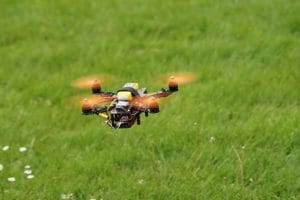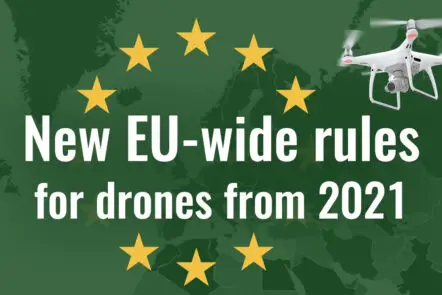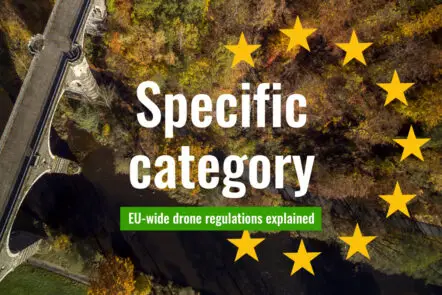Why You Should Build Your Own Drone (Guest Post)
Last update on 12.10.2018 | 3 Kommentare
For some enthusiasts and experts alike, drone building and design are far from limited to the hands of commercial businesses and is a thing which all could hope to become involved with for themselves. Often all that is needed is a 3D printer, a little know-how, a steady hand, and an internet connection.
 These DIY drones rely heavily on open source software – that which is shared freely with the public by its creator – allowing them to be reproduced, studied, or crucially changed by anyone and everyone with a desire to.
These DIY drones rely heavily on open source software – that which is shared freely with the public by its creator – allowing them to be reproduced, studied, or crucially changed by anyone and everyone with a desire to.
We spoke to Ivan Gayton, the GIS, and Technological Innovations officer at Medecins Sans Frontieres, about how open source software can be used to create DIY Drones. He says that an original UAV design that he has developed would not have been possible without the combined work of countless contributors from around the world. He also believes that it is only through small contributions from lots of people that such advanced technology can become freely available to all.
And being a lot of fun, the humanitarian worker turned drone developer says that drone technology can play an essential role in helping people in the developing world, as open source guides empower them to build their own, and use them to map the areas where they live. Due to this belief, he’s contributing to the field with his own open sourced design for a drone, made of parts that can be printed from a commercial level 3D printer. In his words he’s aiming to create:
A low cost, open-sourced UAV that anyone can build, even in low resource settings
For Ivan Gayton, the solution is not sending in emergency response teams with expensive equipment to save those in need; it is about people helping themselves with the use of drones.
Because most of the work that I am doing is in the open source world, and enough people are doing it in that world, it is plausible that this could be democratized, and put in the hands of Congolese and Bangladeshi citizens
Gayton’s drone design makes use of the cheapest materials available to him, to expand the number of people who can use them. We ask if he sees his drone as ever becoming a competitor to commercial drone companies:
I am after empowering people in Sub-Saharan Africa, with something which is not as going to be as slick and cool and work straight out of the box… that is not the market I am after; I am after people who want to map from a 200-pound drone
With materials like insulation foam, bamboo and elastic being used in his drone designs, Gayton jokes that his quadcopter drone is known as ‘The Ghetto Quad’ amongst his peers.
Ivan Gayton’s overarching humanitarian drones ambition is to rely on them to survey areas of the world that currently aren’t. Maps assist significantly in emergency relief efforts, allowing emergency responders data with which to base their response, and giving possible clues to disease outbreaks and vulnerable areas. To this end, Gayton is involved in MSF’s Missing Maps Project, seeking to map the developing world using volunteer mappers’ images to assist those in need.
You’re going to save lives if you get this mapping done before the disaster, so as part of the Missing Maps Initiative, we’re trying to map vulnerable areas proactively, so when things go wrong, we’re ready.
While experts, enthusiasts and commercial companies have been busy creating DIY drones for many years, institutions around the UK are also now offering students the knowledge and experience to contribute to this thriving new industry. From Sept 2014, in the Mechanical Institute Engineers’ Unmanned Aircraft System Challenge, British students were assigned with building a drone capable of carrying out a representative education mission.
Judging took place in July 2015, and a team from Southampton University, who successfully created a fixed-wing drone capable of autonomous flight, won the competition. We spoke to the team’s captain, Michael Ladhams, about the challenge of building a fully functional drone.
Firstly, how well did your UAV perform in the challenge?
We managed to take off autonomously and were able to drop two payloads within 25 meters of their targets. As the UAV appeared to have swung off course on the way to the third point, the judges feared that we’d lose it and ordered that our safety pilot take control. As it was flying autonomously, we’ll never know whether it would have made it to that third point.
How much of a challenge was it to build a UAV, and do you think that a wide range of people will be able to make them in the future?
We built our UAV with the knowledge that we’ve picked up from 3 years of an engineering course, with the minimal guidance needed along the way. Indeed, far more people could build a UAV, they’re becoming far more affordable, and people are making them as a hobby.
Do you have any concerns about the wide availability of drones, and their potential to be used maliciously?
UAVs have existed in the form of model aircraft for a long time, which are mostly the same. People have long feared the malicious use of aircraft, so in this way, drones are no different. However, with their capacity for autonomous flight and their ability to drop payloads, they offer some new capabilities for misuse.
There are a lot of companies at the moment talking about widely incorporating UAVs into public places, do you feel that this is a reasonable expectation?
From our experience, I can’t see how they’re going to justify that these UAVs will be safe, we’ve come across so many unexpected safety problems.
How do you feel about current safety regulations, are they tough enough?
It’s a difficult one, everyone can see that there are safety concerns, and it would be reassuring to see more in place; but at the same time, we’ve had to get around a lot of CAA regulations to build our UAV, and we don’t want to see their commercial applications limited by over-regulation.
Do you feel that your UAV, and others in the competition, could have real-world applications?
Definitely. When we saw the situation after the Nepalese earthquake, we were all sure that drones similar to ours could help people in need. The main challenges are to increase their range and overcome the safety concerns that we’ve come across; once this is the case, there are real-world humanitarian uses for these UAVs.
 About the Author
About the Author
Oliver McClintock started building little DIY drones ever since he was a kid. From FPV racers to the indoor unit he has done it all. Years later, he is only to find out his passion turned into serious hobby leading to the creation of his own blog called MyDearDrone. To spread the knowledge, he shares his drone experience with others.
 About the Author
About the Author EU-wide drone regulations: Classes of drones explained
EU-wide drone regulations: Classes of drones explained
 New EU-wide rules for drones from 2021
New EU-wide rules for drones from 2021
 EU-wide drone regulations: The Open category explained
EU-wide drone regulations: The Open category explained
 EU-wide drone regulations: The Specific category explained
EU-wide drone regulations: The Specific category explained
Hello
In October 2018 we went on holiday to Croatia, on the island of Krk. Impossible to fly our DJI Mavic Pro drone….
However, according to your information, category B1 does not require a permit (?)
Do you know why we couldn’t fly our drone ?
Thank you very much for your help!
Great article. Fun to read and really helpful 🙂 Thank you very much for sharing and keep up the good work!